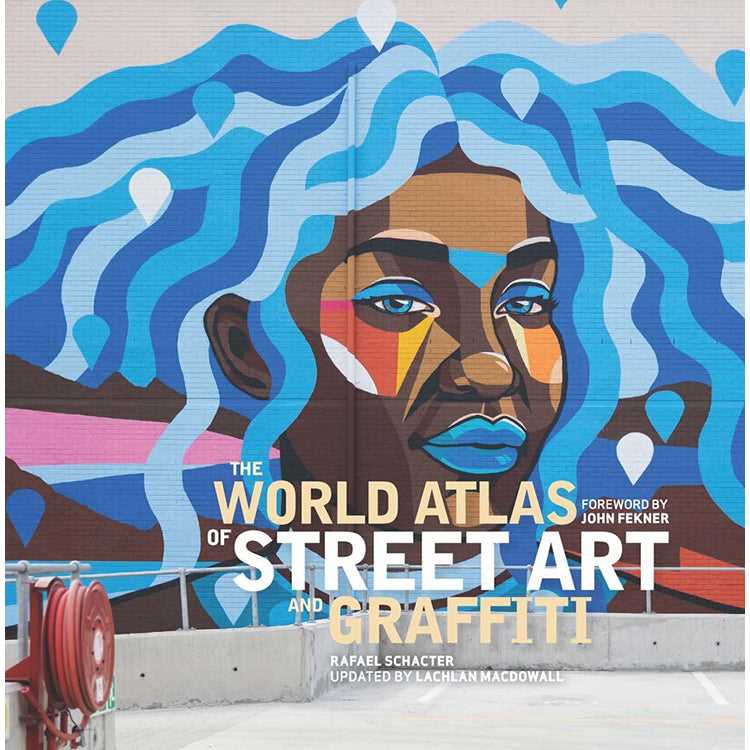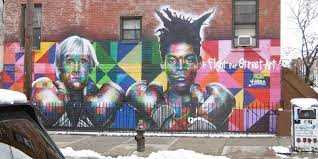Graffiti prints have long been an integral part of urban culture, showcasing the vibrant and rebellious spirit that characterizes many cities around the world. From New York City to Berlin, these prints can be found on walls, buildings, and even train cars, serving as a form of self-expression and a visual representation of the artists’ creativity.
What sets graffiti prints apart from traditional forms of art is their rawness and unconventional beauty. Unlike paintings and sculptures that are carefully curated in galleries, graffiti prints are often created in public spaces, allowing for a wide range of interpretations and reactions from passersby. This element of surprise and spontaneity adds to the allure of graffiti prints, captivating both art enthusiasts and casual observers alike.
One of the fascinating aspects of graffiti prints is the diversity of styles and techniques employed by the artists. From bold, vibrant lettering to intricate stencils and elaborate murals, each print carries the unique signature of the artist behind it. Some artists use graffiti as a medium for political or social commentary, while others focus on creating visually stunning pieces that simply add color and life to the urban landscape.
Moreover, graffiti prints have transcended their original context and have made their way into mainstream culture. Today, they can be found on clothing, accessories, and even in galleries and museums, elevating the status of these prints from mere street art to a recognized form of artistic expression. Whether you’re a seasoned art collector or someone who simply appreciates the energy and creativity of urban spaces, exploring the world of graffiti prints is sure to be an exciting and visually stimulating journey.
Street art has become an integral part of urban culture, adding a burst of color and creativity to city streets all around the world. From simple tags to elaborate murals, street art showcases the artistic talent and vibrant energy of the communities it represents.
One of the most unique aspects of street art is its accessibility. Unlike traditional art forms that are often confined to galleries and museums, street art is publicly displayed for everyone to see. This democratization of art allows for a wider audience and encourages a sense of community engagement and interaction.
The Origins of Street Art
Street art has its roots in graffiti, a form of self-expression that emerged in the 1960s and 1970s in major cities like New York and Philadelphia. Graffiti artists started by marking their territories with simple tags, but as the art form evolved, it began to incorporate more complex designs and messages.
Over time, street art has evolved into a multifaceted art form that includes stencil art, wheatpaste posters, and large-scale murals. It encompasses a wide range of styles, from abstract and surreal to political and social commentary.
Urban Culture and Street Art
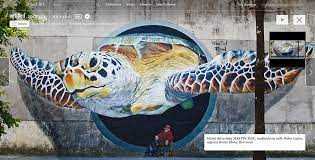
Street art is deeply intertwined with urban culture, reflecting the diversity and vitality of city life. It often speaks to the experiences and issues faced by urban communities, voicing dissent or amplifying marginalized voices.
In addition to its social commentary, street art adds an aesthetic dimension to urban environments. By transforming drab concrete walls and structures into vibrant works of art, street artists brighten and enliven their surroundings, creating a visual feast for both locals and visitors.
The ephemeral nature of street art adds another layer of intrigue. Many pieces are not intended to last forever and are subject to being painted over or removed. This impermanence only adds to the allure and excitement of discovering new street art pieces as they come and go.
Overall, street art represents a dynamic and colorful expression of urban culture. It brings art out of traditional spaces and into the streets, making it accessible to all. Whether it’s a thought-provoking mural or a carefully crafted stencil, street art has the power to captivate, inspire, and spark conversation.
Spray Can as a Tool: The Technique Behind Graffiti Prints

The Can Control

One of the key aspects of creating graffiti prints is mastering the art of “can control”. Can control refers to the artist’s ability to manipulate the spray can to achieve the desired effect on the surface. This includes controlling the flow of paint, line thickness, and even the texture created.
Artists practice and experiment with different nozzle sizes and pressure levels to achieve specific effects. They learn to vary the distance between the spray can and the surface to create different levels of opacity and transparency. The impressive level of control that artists can achieve allows them to effortlessly create complex forms and intricate details.
Layering and Techniques
Layering is another important technique used in graffiti prints. Artists create depth and add dimension to their artwork by layering different colors and textures. This often involves meticulously planning out the composition of the piece and strategically applying each layer to create the desired effect.
Overlapping colors can create new shades and hues, making the artwork visually rich and captivating. Techniques such as fades, drips, and gradients are also utilized to add visual interest and create a sense of movement within the artwork.
- Fades: Fades involve blending two or more colors seamlessly, creating a smooth transition from one color to another.
- Drips: Drips are a popular technique that adds a dynamic and organic feel to the artwork. Artists can control the direction and intensity of the drips to create a sense of motion.
- Gradients: Gradients involve smoothly transitioning from one color to another, creating a gradient effect that adds depth and dimension to the artwork.
Graffiti prints are a true testament to the skill and technique of the artist. The spray can acts as a versatile tool that enables artists to express their creativity and create stunning pieces of art. The mastery of can control and the use of layering and various techniques all contribute to the creation of extraordinary graffiti prints that continue to captivate audiences around the world.
Murals: Transforming Blank Walls into Urban Masterpieces
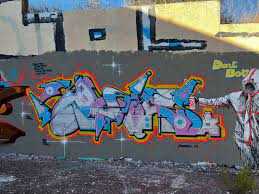
Murals are a form of street art that has gained significant popularity in recent years. These large-scale artworks have the power to transform blank walls into vibrant, thought-provoking, and visually stunning masterpieces.
The Power of Murals
Murals have the ability to completely change the look and feel of a neighborhood or cityscape. They can turn ordinary buildings into extraordinary works of art, breathing new life into urban spaces. With their bold colors, intricate designs, and creative storytelling, murals captivate viewers and leave a lasting impression.
But murals are more than just aesthetically pleasing. They also serve as a means of expression, allowing artists to share their messages, stories, and perspectives with the world. Murals can address social, political, and environmental issues, serving as a powerful tool for activism and awareness.
The Process of Creating a Mural
Creating a mural is a labor-intensive process that requires careful planning and execution. The artist begins with a blank wall and envisions a design that aligns with the surrounding environment and reflects the desired message. They may sketch their ideas, create a digital mock-up, or use stencils to outline the design on the wall.
Once the design is finalized, the artist selects suitable paints and materials to bring their vision to life. They meticulously apply layers of paint, using brushes, rollers, or even aerosol cans, paying close attention to details and color gradients. The process may take several days or even weeks to complete, depending on the size and complexity of the mural.
Throughout the creation process, the artist may receive support and collaboration from the local community, business owners, or other artists. Murals often serve as a collaborative effort, bringing together different perspectives and talents to create something truly unique and impactful.
Murals: A Global Phenomenon
Murals can be found in cities around the world, from New York to Berlin, São Paulo to Melbourne. Each mural tells a story, capturing the essence of the local culture, history, and identity. They draw tourists, art enthusiasts, and locals alike, creating a sense of pride and identity within the community.
As the popularity of street art continues to grow, so does the appreciation for murals as a powerful form of artistic expression. These urban masterpieces have the ability to spark conversations, inspire change, and beautify public spaces, making them an integral part of the contemporary art scene.
The Meaning Behind Street Tags and Graffiti Art
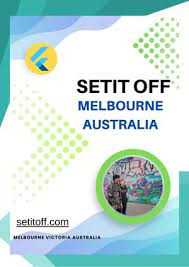
Graffiti art is often considered to be a form of self-expression and rebellion. Street tags, which are the signatures or monikers that graffiti artists leave behind, are an integral part of this art form. These tags serve as a way for artists to mark their territory and leave their mark on a city’s landscape.
But street tags are more than just a way for artists to sign their work. They also have deeper meanings and symbolism. Each tag is unique and carries a personal message or identity for the artist. Street tags can represent a graffiti artist’s crew, a nickname, or even a political statement.
Some graffiti artists use their tags to convey messages of social or political activism. These tags can be seen as a form of protest or a way to raise awareness about certain issues. For example, a tag that depicts a fist can symbolize resistance and the fight against injustice. Street tags can also be used to make statements about race, gender, or other forms of identity.
In addition to their symbolic meanings, street tags also have a practical purpose. They can serve as a form of communication between graffiti artists, allowing them to leave messages or send signals to one another. Tags can indicate which areas are safe to paint, which areas are off-limits, or even provide information about other artists or crews.
While street tags are often associated with illegal graffiti and vandalism, they are also an important part of the larger graffiti art culture. Many graffiti artists view their tags as a form of artistic expression and consider themselves part of a larger community. Street tags can spark conversations, inspire other artists, and serve as a visual representation of the vibrant and diverse world of graffiti art.
Collectible Prints: Preserving the Essence of Street Art
Collectible prints are reproductions of original street art created by renowned artists. These prints capture the vibrancy, creativity, and energy of street art, allowing collectors to own a piece of this dynamic art form. Not only do they provide an affordable way to own street art, but they also support the artists by giving them wider exposure and recognition.
One of the benefits of collectible prints is their accessibility. Unlike original street art, which may be limited to a specific location, prints can be shared globally and reach a wider audience. Art lovers who may not have the opportunity to see street art in person can still experience and appreciate the beauty and message behind these works.
Collectible prints come in various formats, including screen prints, lithographs, and giclee prints. Each format adds its unique touch and texture to the artwork, making the prints even more valuable and collectible. Moreover, these prints are often produced in limited editions, which increases their desirability and collectability.
With the growing popularity of street art, collectible prints have become highly sought after by art collectors and enthusiasts alike. They offer an opportunity to own a piece of street art history and support the artists who continue to push boundaries and challenge conventions. Additionally, collecting prints allows individuals to decorate their spaces with unique and captivating artworks that reflect their personal style and interests.
Collectible prints not only preserve the essence of street art but also contribute to the democratization of art. By making street art accessible to a broader audience, these prints help create a dialogue between artists and viewers, fostering a deeper appreciation and understanding of this vibrant art form.
Appreciating the Diversity in Graffiti Art
Graffiti art is a diverse and vibrant form of expression that can be found in cities across the world. From massive murals to small tags, graffiti artists use their creativity and skill to leave their mark on the urban landscape.
The Origins of Graffiti
Graffiti has a long and rich history, with roots in ancient civilizations like ancient Rome and Greece. However, it really gained popularity in the 1970s in cities like New York, where young artists began using spray paint to create colorful and intricate designs on walls and train cars. Since then, graffiti art has evolved and expanded, becoming a global phenomenon.
A Platform for Social Commentary
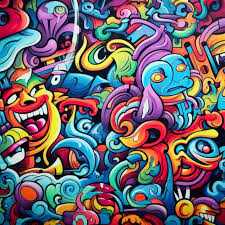
One of the most intriguing aspects of graffiti art is its ability to make powerful social and political statements. Many graffiti artists use their work to address important issues such as inequality, racism, and environmental concerns. With the use of symbols, imagery, and bold colors, these artists communicate their messages to a wide audience.
Graffiti art allows for diverse perspectives and voices to be heard, providing a platform for marginalized communities or individuals who are often ignored or silenced. It challenges societal norms and can spark important conversations about the state of our world.
Aesthetically Pleasing Diversity
Another aspect of graffiti art that is worth appreciating is the sheer diversity in styles and techniques employed by artists. From realistic portraiture to abstract designs, graffiti artists showcase a wide range of artistic skills. The use of vibrant colors, intricate details, and unique lettering styles adds to the visual appeal of graffiti art.
Furthermore, graffiti art often incorporates elements of other art forms such as stencil work, mural painting, and calligraphy. This fusion of styles and techniques creates a visually striking and dynamic art form that captivates viewers and encourages them to explore its many layers.
Art and Activism: How Graffiti Prints Convey Social Messages
Graffiti prints have long been used as a powerful form of artistic expression and a way to convey social messages. Graffiti artists often use their prints to bring attention to important social issues, challenge the status quo, and inspire change.
One of the ways graffiti prints convey social messages is through powerful visuals. Artists carefully choose their imagery to create impact and stir emotions. Whether it’s a bold statement about inequality, a depiction of political corruption, or a tribute to a marginalized community, graffiti prints can capture the attention of passersby and provoke thought.
Another way graffiti prints convey social messages is through the use of symbolism. Artists often incorporate symbols and motifs that represent the issues they are addressing. These symbols can serve as a visual language, allowing the viewers to decipher the underlying meaning of the artwork. For example, a raised fist may symbolize resistance and struggle, while a broken chain can represent liberation.
Graffiti prints also convey social messages through the locations where they are placed. Artists strategically choose walls and public spaces that have significance or are easily accessible to the public. By placing their prints in these locations, artists ensure that their messages reach a wide audience and spark conversations within the community.
Lastly, graffiti prints convey social messages through their inherent act of defiance. Graffiti is often considered illegal and is associated with rebellion against authority. The act of creating graffiti prints itself can be a form of activism, challenging the system and providing a voice for marginalized communities or individuals.
Legalities and Controversies Surrounding Street Art
Street art, while often seen as a vibrant and exciting form of self-expression, is not without its share of legalities and controversies. In many cities around the world, graffiti is illegal and considered an act of vandalism. Artists who engage in this form of art often face fines, community service, or even jail time.
However, there are also areas where street art is embraced and celebrated. Some cities have designated walls or spaces where artists can freely create their works. These designated areas provide a platform for artists to showcase their talents and express their ideas without fear of legal repercussions.
One of the major controversies surrounding street art is the issue of ownership. Many artists feel that their work should be protected and respected, even if it’s created illegally. Some argue that street art adds value to a community by beautifying otherwise dull and uninteresting spaces. Others, however, believe that street art is a form of vandalism that defaces public property and should be eradicated.
The debate over the classification of street art as art or vandalism is a contentious one. While some view it as an important and valid art form, others see it as destructive and disrespectful. The distinction between street art and graffiti can also be blurred, with some arguing that graffiti is a form of illegal tagging rather than artistic expression.
Another legal issue surrounding street art is copyright infringement. When artists create street art, they often use recognizable logos, images, or characters without permission. This can lead to legal battles, with companies and individuals asserting their rights to protect their intellectual property.
Graffiti Prints in Mainstream Culture: Influence on Fashion and Design
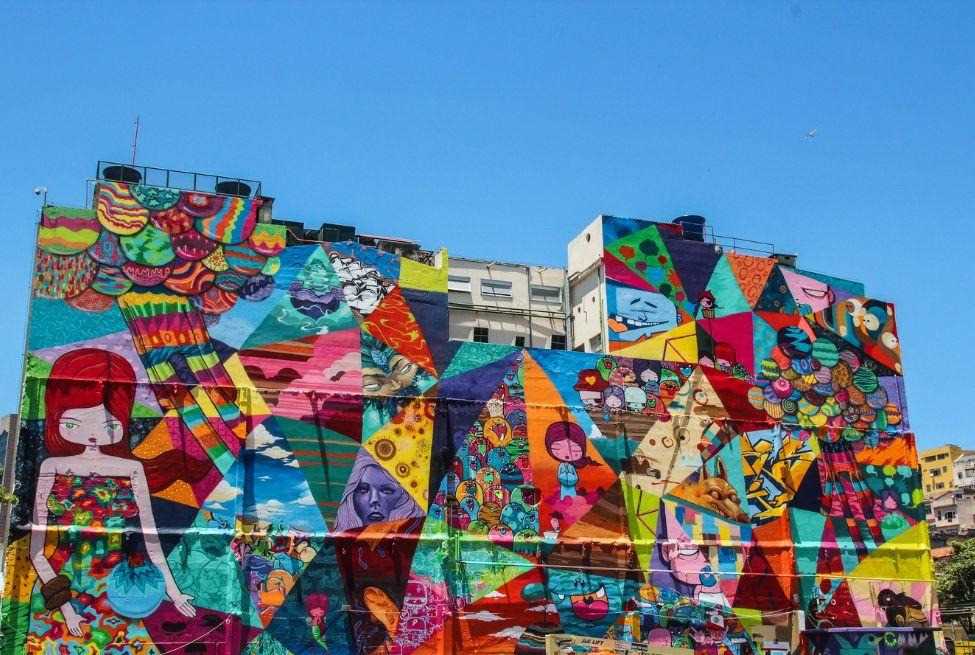
Graffiti prints, once considered a form of vandalism and street art, have now made their way into the mainstream culture, influencing fashion and design in a significant way. What was once seen as a rebellious and underground art form has now become a trend embraced by many in the fashion industry and beyond.
Fashion
Graffiti prints have become a popular choice in the fashion world, adorning clothes, accessories, and even shoes. Designers like Marc Jacobs, Louis Vuitton, and Gucci have incorporated graffiti-style elements into their collections, making it a bold statement and turning it into high fashion. The vibrant colors, intricate patterns, and edgy aesthetics of graffiti prints have caught the attention of fashion enthusiasts and celebrities alike.
Streetwear brands have also embraced graffiti prints, creating urban and stylish clothing that appeals to a younger demographic. Hoodies, T-shirts, and sneakers featuring graffiti-inspired artwork have become must-have items for those looking to express their individuality and sense of urban culture through their fashion choices.
Design
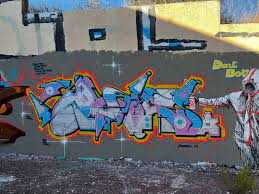
Graffiti prints have not only influenced fashion but also the design industry as a whole. Interior designers, graphic designers, and artists have started incorporating graffiti-style elements into their work, creating a vibrant and urban feel. From murals on building walls to wallpapers and posters, graffiti prints have become a way to add a touch of creativity and edginess to any space.
Additionally, graffiti prints have also found their way into product design. From phone cases to home decor items, the bold and unique patterns of graffiti prints have become a popular choice for those looking to add a modern and urban twist to their everyday items.
- Furthermore, graffiti prints have even influenced the world of digital design. Websites and apps often incorporate graffiti-inspired elements to create a visually appealing and dynamic user experience.
- The influence of graffiti can also be seen in the world of typography and lettering, with many designers creating graffiti-style fonts and scripts that are used in various design projects.

I am a mural enthusiast and a fervent admirer of street art. Rather than creating murals myself, I am passionate about collecting them. My love for street art knows no bounds. I am dedicated to curating and cherishing these artworks that grace the streets. My collection stands as a testament to my profound appreciation for this form of artistic expression.
read about me

